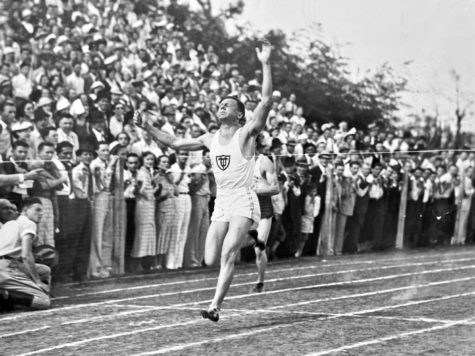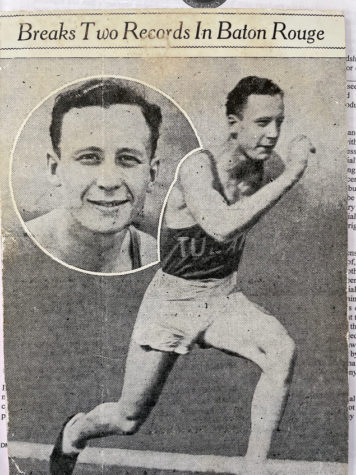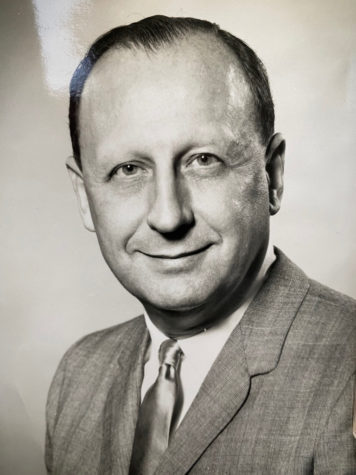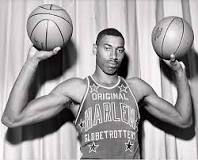Peter Snell setting world record Jan. 28, 1962 at Whanganui, New Zealand
January 28 is the anniversary of Peter Snell's World Record Mile run in New Zealand. It may already be January 28 down under right now, so we'll put this up on the 27th here in western Canada.
Ernie Cunliffe who was in that race was contacted recently to by Russell Sears about tomorrow's celebrations.
"Back in 1993 I invited you and your wife back to Whanganui to celebrate Peter’s One Mile world record and also the last mile on grass at Cooks Gardens.
I hope this email finds you and I hope you are in good health.
I am trying to contact you as in January 2022 we were awarded a World Athletics Heritage Plaque for “Cooks Gardens-The Home of the Mile”.
This plague is being unveiled on Saturday 28th January at our annual track meeting the “Cooks Classic”. I wish to confirm that you are still alive as to my knowledge you and Alex Shaw are now the only surviving athletes from that great race that put Cooks Gardens on the world stage.
I have attached for your information a list of our sub four minutes milers. It is a growing list and I can confirm that we went ahead with the redevelopment of the track and I have attached a photo which shows the ground as it is today.
Would very much live to hear from you and hope this email address I had from back in 1993 still works.
Russell Sears
Sports Heritage Trust / Cooks Gardens"
L-R Allan Shaw, Albie Thomas, Peter Snell, Bruce Tulloh, Murray Halberg, Ernie Cunliffe, and Barry Cossar
Ernie gave me this account of the race. He was really a half miler, and this race wasn't his cup of tea.
I asked him about the size of the track as well. Was it a five lap track or something slightly longer?
His reply:
"The old grass track was roughly 4 and a half laps to the mile (386 yards) . I don't think there was any car or motorcycle venue around the track itself although I think maybe bicycles could race outside the running track. When we went back in 1993 for the reunion the new track was 400 meters and there was a velodrome outside the running track although I am not certain as to what the distance was outside the track.
Russell I am sure would answer any questions you might have except for : Why did Cunliffe run so slowly that day? Answer: He had not trained for mile, but only 880. I was never a factor in the race and stayed in 4th or 5th place the whole way, and in fact I kind of slowed down to watch the finish when I was in the middle of the last curve since the crowd was so pumped up. I only picked up the pace the last straight to be sure I was ahead of Alex who was a recent high school grad and I defeated him by a small margin. I ran about 4:15 and Halberg in 4th was a 4:07 I believe while the pacer Barry Cossar was last in 4:25 or 4:26 and had been briefed that he had to finish the race or Snell's time would not have been recognized. Everyone knew that Snell would break 4 minutes, but the question was by how much. Tulloh really made the race as he jumped Snell at the end of 3 laps (not sure of the distance since we started on the half lap side of the track) and made Peter speed up to get around Tulloh who kept a steady pace to also break 4 way down near the bottom of the 71 mile list. Gosh a 10 k distance guy breaks 4 minutes in the mile way back in 1962".
Here is the list of the 71 time men who have broken 4:00 at Cook's Gardens in order of best to last.
1 Nick Willis 3m52.75s Wellington February 11 2006 (Track Record)
2 Craig Mottram 3m53.14s Australia February 11 2006
3 Jurgen May 3m 53.8s East Germany December 11 1965 (World Record)*
4 Peter Snell 3m 54.4s Auckland January 27 1962 (World Record)
5 John Walker 3m 54.65s Auckland February 26 1983
6 Kipchoge Keino 3m 54.9s Kenya December 11 1965
7 Ray Flynn 3m 54.9s Ireland February 13 1985
8 John Walker 3m 54.9s Auckland February 13 1985
9 Sam Tanner 3m54.97s Tauranga January 30 2021
10 Pat Scammell 3m 55.2s Australia February 13 1985
11 Rod Dixon 3m 55.5s Nelson January 9 1974
12 Nick Willis3m55.56s Lower Hutt January 19 2016
13 John Walker 3m 55.8s Auckland January 9 1974
14 Nick Willis 3m55.98s Wellington January 20 2014
15 Hamish Christensen 3m56.13s Hastings January 16 1999
16 Bryan Berryhill 3m56.52s USA January 16 1999
17 Eric Speakman 3m56.66s Napier January 30 2021
18 Hamish Carson 3m56.72s Wellington January 19 2016
19 Tony Rogers 3m 57.19s Huntly February 26 1983
20 Eric Speakman 3m57.30s Napier January 19 2016
21 Rorey Hunter 3m57.45s Australia March 2 2019
22 John Walker 3m 57.6s Auckland January 14 1976
23 Adrian Blincoe 3m57.65s Auckland February 16 2008
24 Peter Snell 3m 57.7s Auckland February 1 1964
25 Peter O'Donoghue 3m 57.7s Auckland March 24 1984
26 Tony Rogers 3m 57.7s Huntly February 13 1985
27 Michael Hillardt 3m 57.8s Australia March 24 1984
28Dick Quax 3m 58.0s Auckland January 9 1974
29 Hamish Christensen 3m58.06s Hastings January 18 1997
30 Nick Willis 3m58.09s Wellington January 22 2013
31 Phil Clode 3m58.13s CMA January 22 2000
32 David Campbell 3m58.19s Ireland February 16 2008
33 Peter O'Donoghue 3m 58.2s Whangarei February 2 1982
34 Darryl Frecker 3m58.2s USA January 27 1993
35 Alistair Stevenson 3m58.38s Australia January 22 2000
36 Sam Tanner 3m58.41s Tauranga March 2 2019 (NZ U19/20 Record)
37 Mo Farah 3m58.45s England February 11 2006
38 Will Leer 3m58.49s USA January 27 2012
39 Tom Smith 3m 58.5s USA February 2 1982
40 Paul Van De Grift 3m58.5s USA January 27 1993
41 Dick Quax 3m 58.6s Auckland January 14 1976
42 Brian Theriot 3m 58.6s USA February 13 1985
43 Hamish Christensen 3m58.68s Hastings January 15 1998
44 Peter O’Donoghue 3m58.7s Australia January 27 1993
45 Hamish Christensen 3m58.73 Hastings January 20 2001
46 Andrew Baddeley 3m58.81s England March 17 2007
47 Nick Willis 3m58.81s Wellington January 27 2012
48 Phil Clode 3m58.83s Auckland January 18 1997
49 Julian Oakley 3m58.88s Tauranga January 30 2022
50 Stephen Willis 3m 59.04s Wellington January 22 2000
51 Paul Hamblyn 3m59.05s Auckland February 11 2006
52 Hamish Carson 3m59.11s Christchurch January 27 2012
53 George Beamish 3m59.13s Whanganui January 30 2021
54 Bill Baillie 3m 59.2s Auckland February 1 1964
55 Harold Hudak 3m 59.2s West Germany February 2 1982
56 Chris Bowden 3m59.23s Australia January 15 1998
57 Simon Maunder 3m59.28s Auckland January 22 2000
58 Bruce Tulloh 3m 59.3s England January 27 1962
59 Bryan Berryhill 3m59.35s USA January 22 2000
60 Simon Maunder 3m59.49 Auckland January 20 2001
61 Kerry Rodger 3m 59.5sAuckland February 13 1985
62 Phil Clode 3m59.5s Auckland January 27 1993
63 Lee Emmanuel 3m59.69s England January 27 2012
64 Peter Renner 3m 59.7s Christchurch February 13 1985
65 Oli Chignell 3m59.77s Dunedin January 30 2021
66 Tony Rogers 3m 59.8s
Huntly March 24 1984
67 Matthew Taylor 3m59.80s Auckland January 30 2022
68 Malcolm Hicks 59.87s Christchurch January 27 2012
69 Gareth Hyett 3m59.80s Wellington February 11 2006
70 Gareth Hyett 3m59.90s Wellington March 17 2007
71 Aunese Curreen 3m59.91s Samoa February 16 2008
* Bettered current world record of Peter Snell of 3m54.1
Michael Jazy (France) had World Record Pending at this date of 3m53.6s, which was later ratified by the IAAF
Russell Sears
Grass Track
As at 30 January, 2022
"Cooks Gardens: The Home of the Mile"
All Weather Surface






























